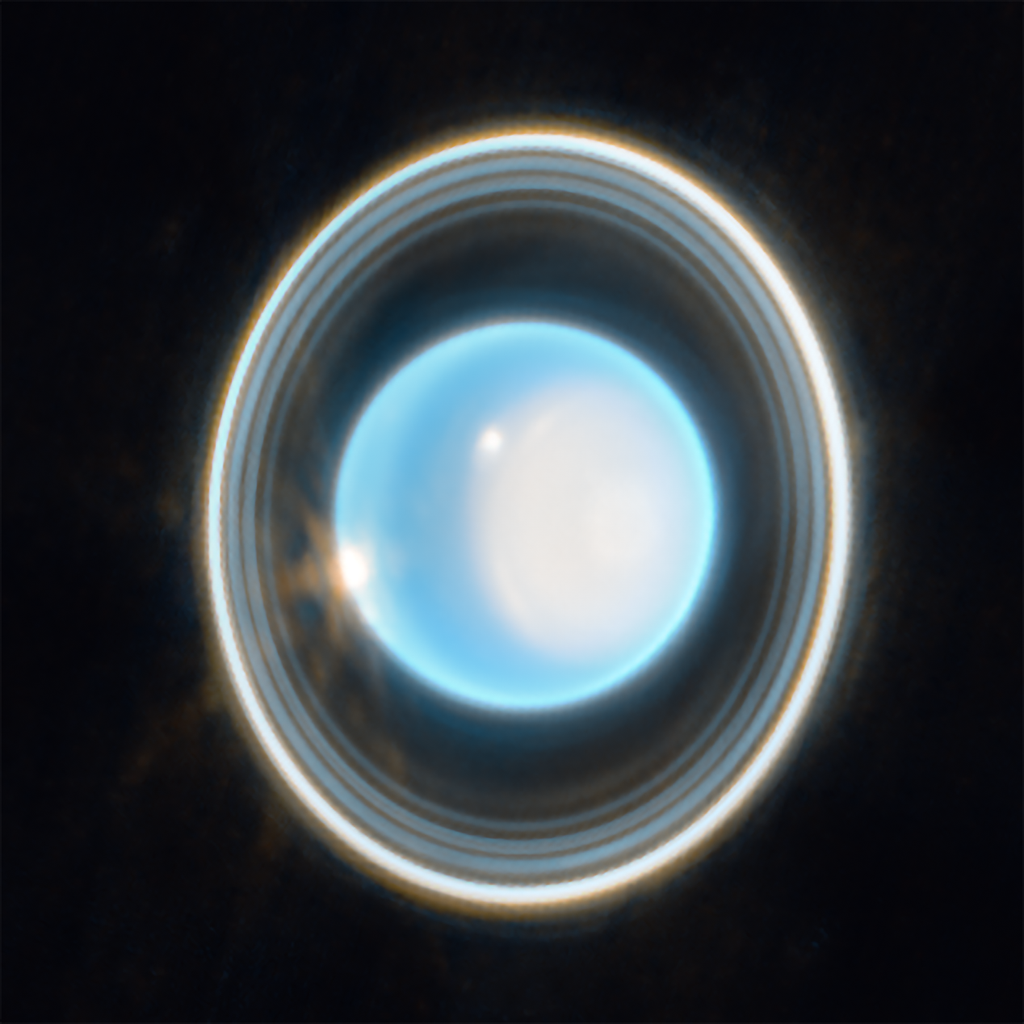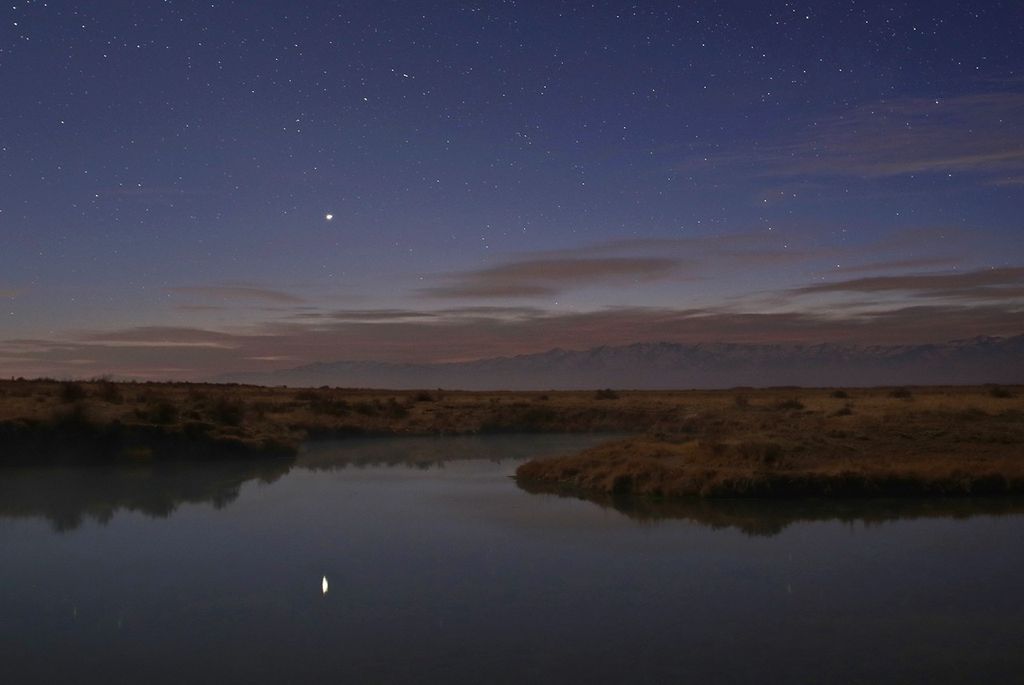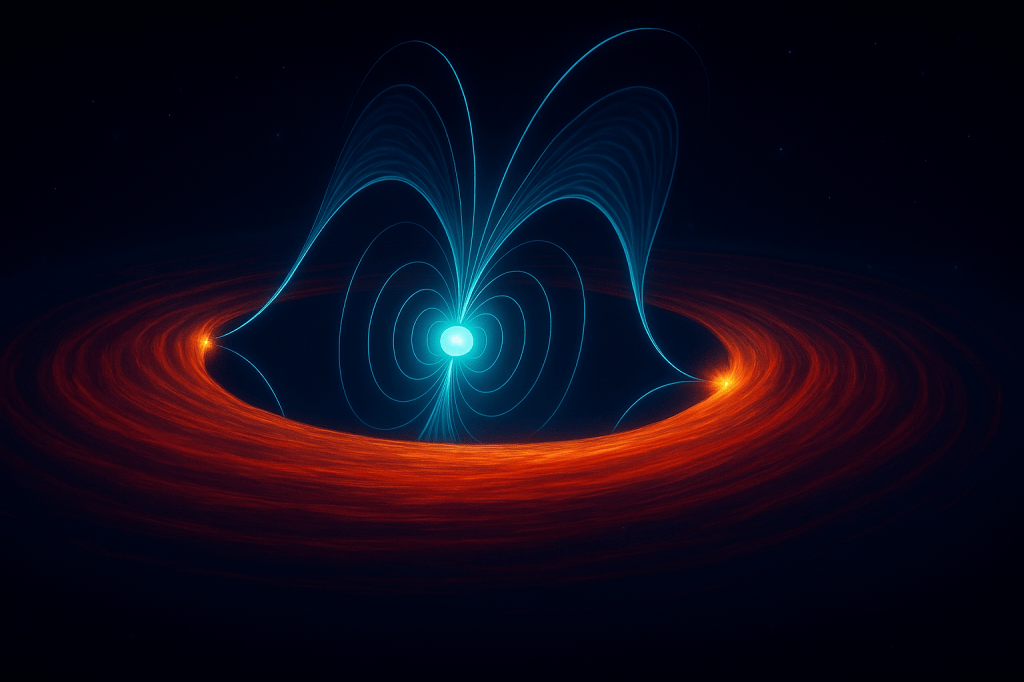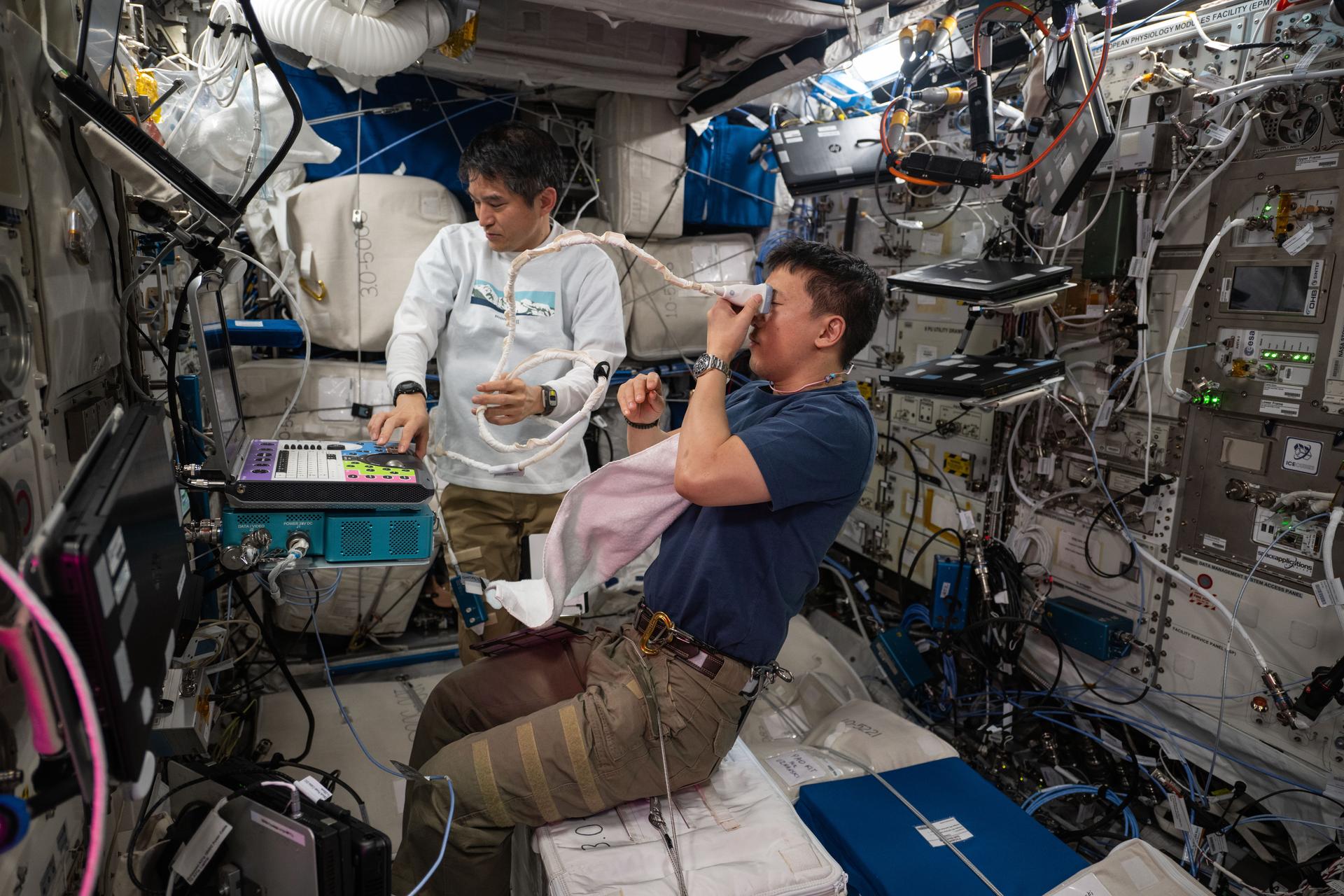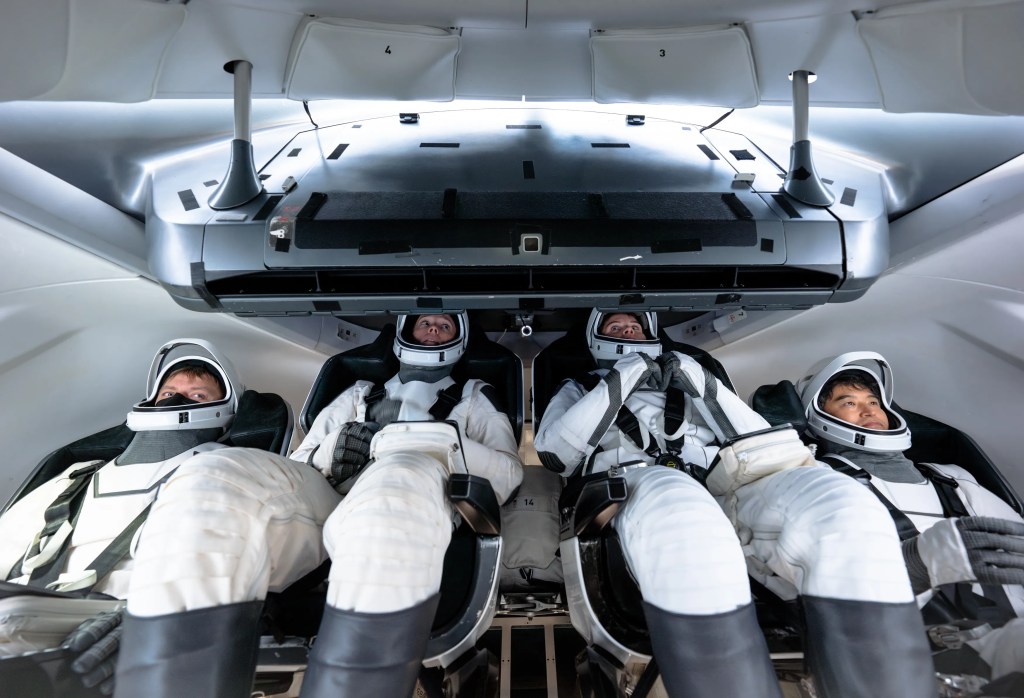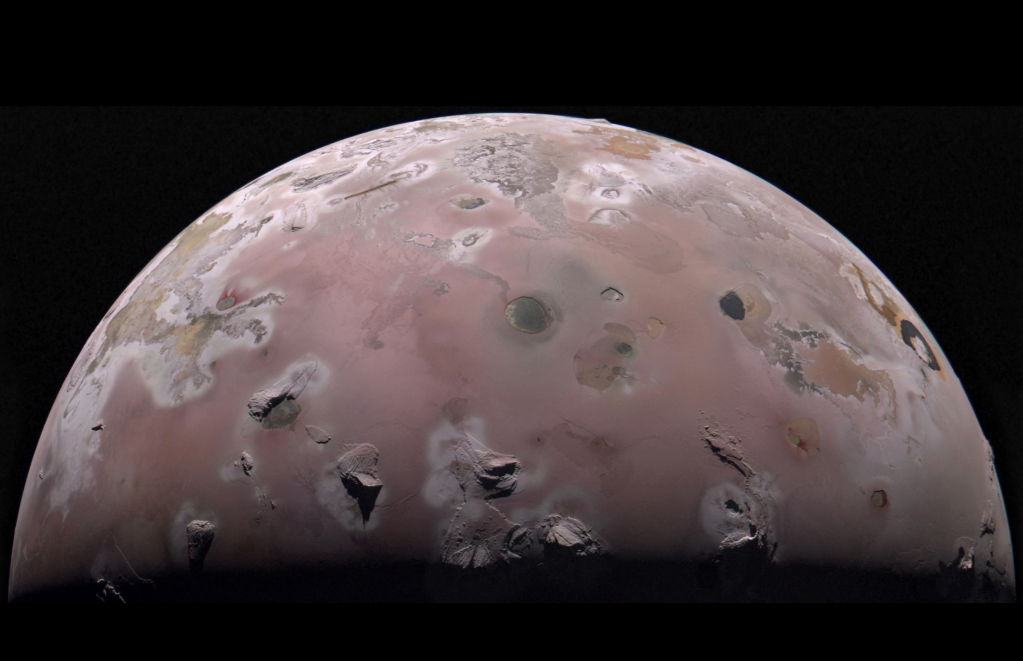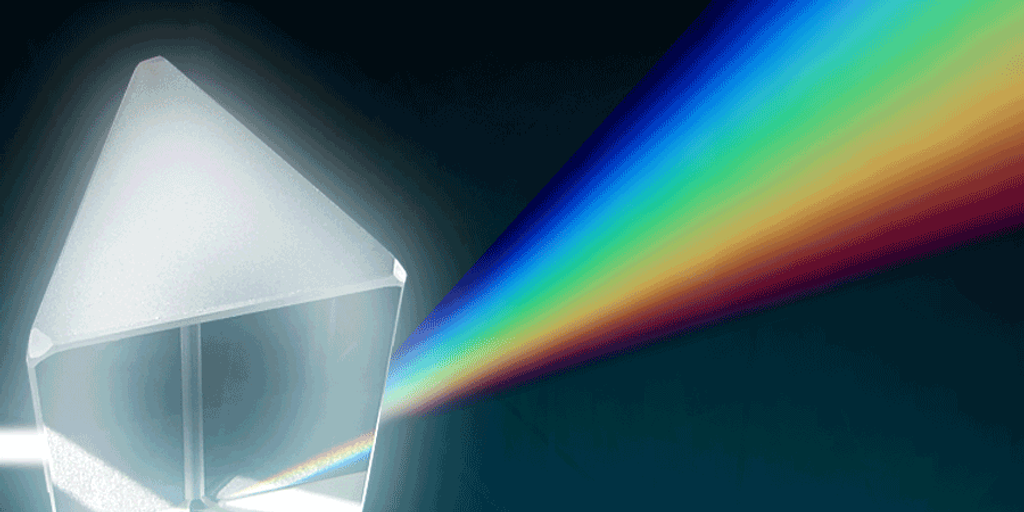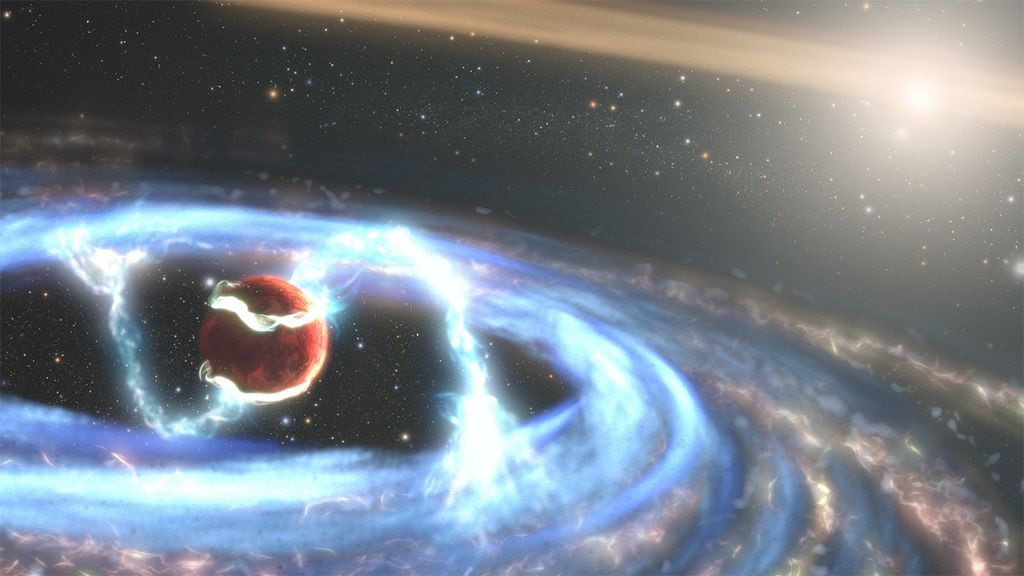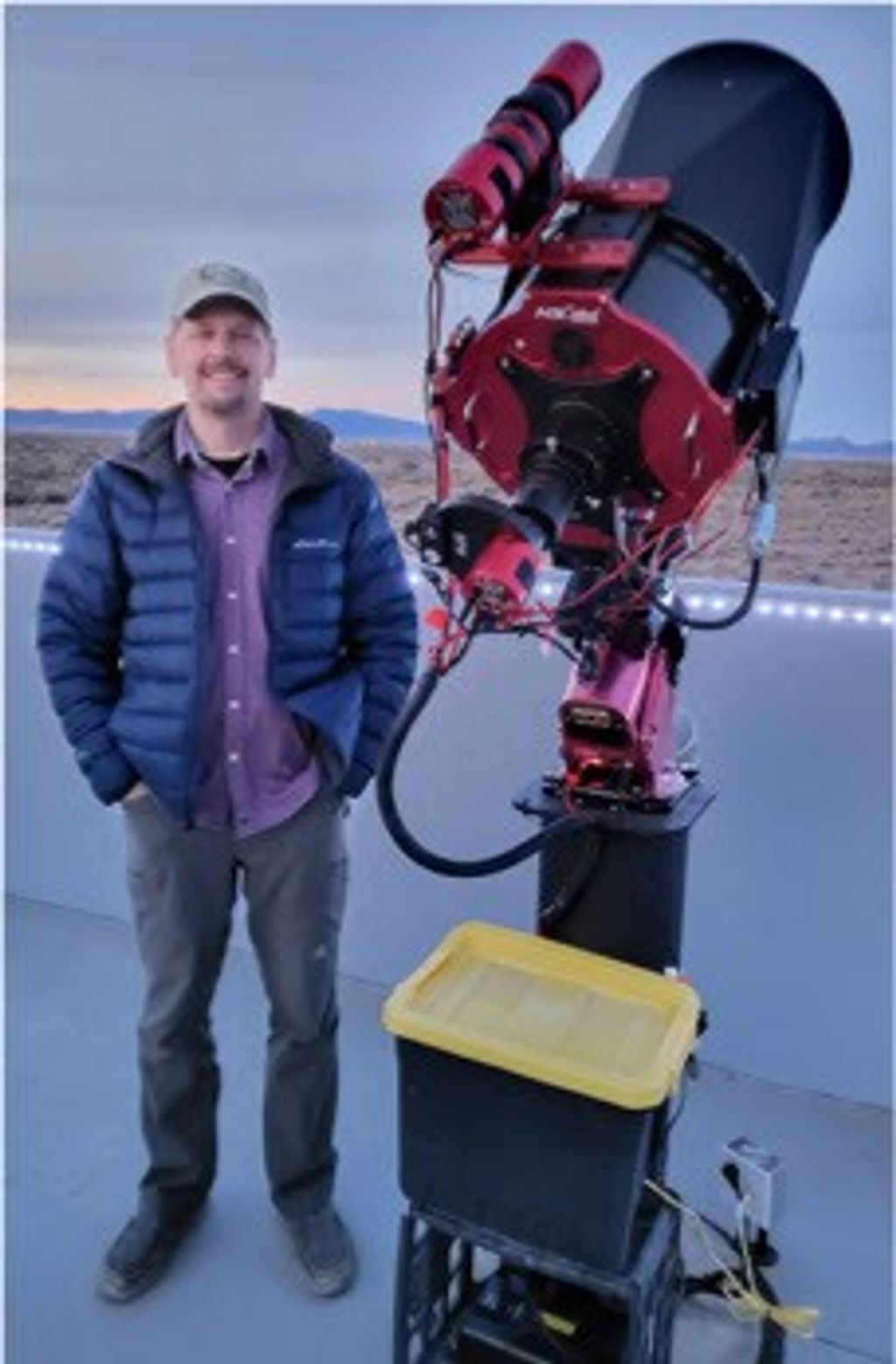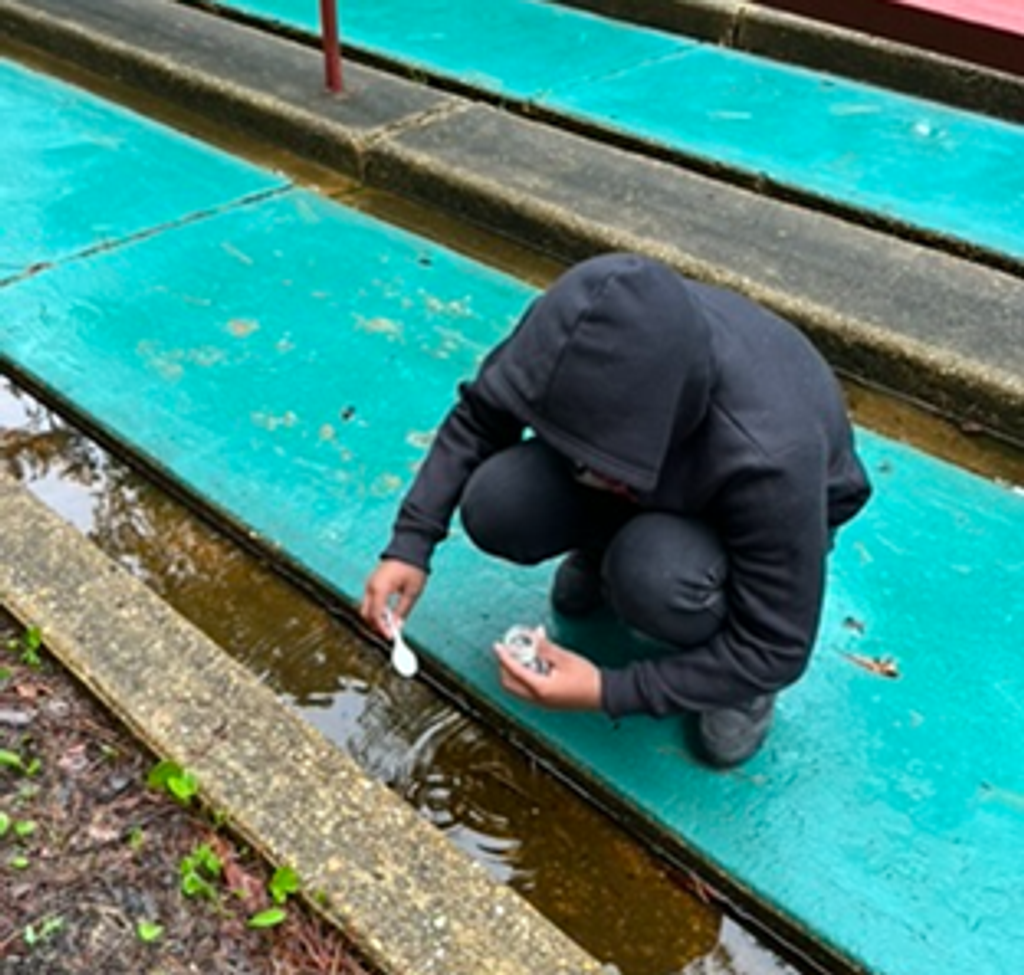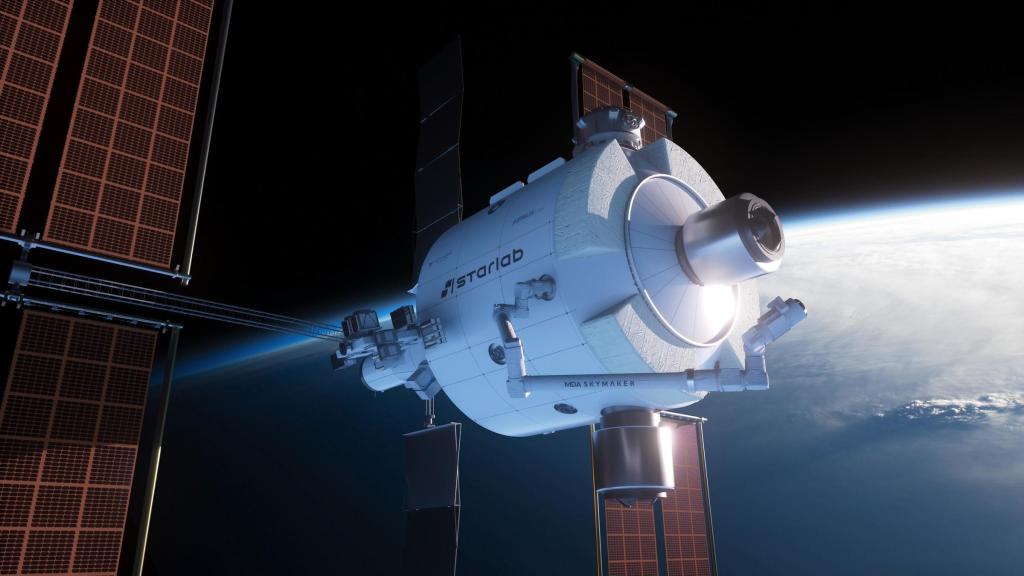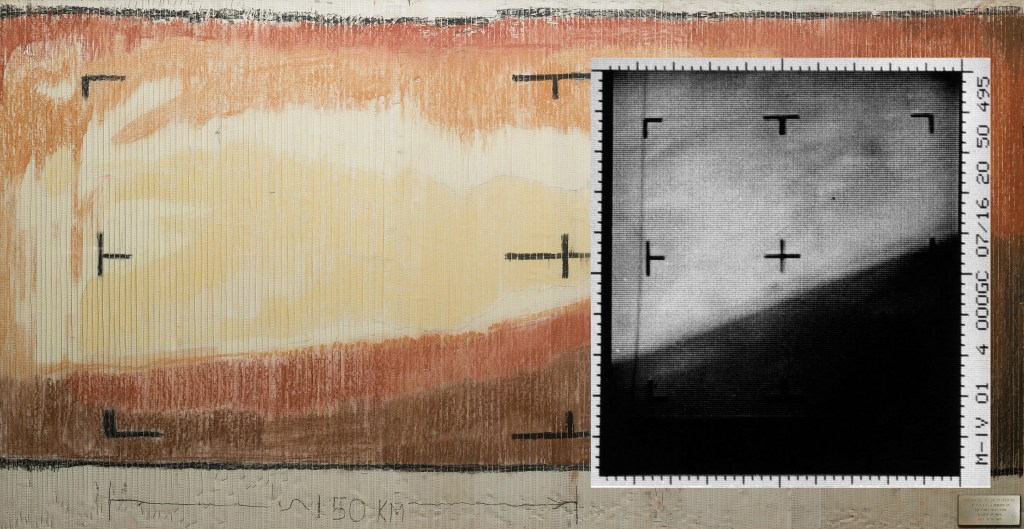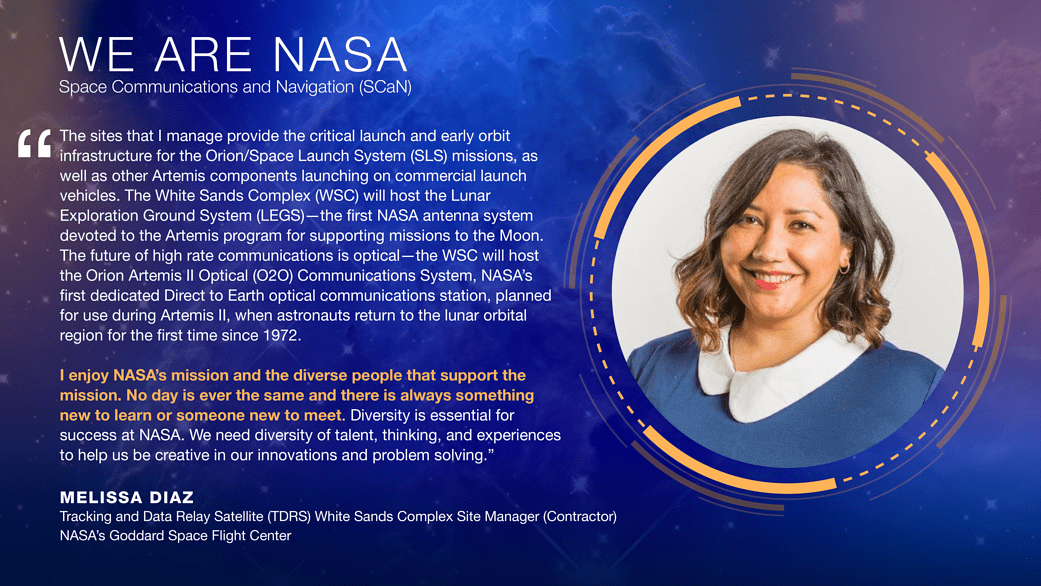What makes your job at NASA exciting or unique? I take very seriously that the systems and personnel at the sites that I manage can impact what happens in space especially on the International Space Station. My team works very hard to make sure we have redundancy and the expertise to ensure we take care of NASA’s assets on Earth and in space.
How does your position contribute to the future Artemis missions? The sites that I manage provide the critical launch and early orbit infrastructure for the Orion/Space Launch System (SLS) missions, as well as for other Artemis components launching on commercial launch vehicles. The White Sands Complex (WSC) will host the Lunar Exploration Ground System (LEGS)—the first NASA antenna system devoted to the Artemis program for supporting missions to the Moon. The future of high rate communications is optical—the WSC will host the Orion Artemis II Optical (O2O) Communications System, NASA’s first dedicated Direct to Earth optical communications station, planned for use during Artemis II, when astronauts return to the lunar orbital region for the first time since 1972.
What’s your favorite thing about working for NASA?I enjoy NASA’s mission and the diverse people that support the mission. No day is ever the same and there is always something new to learn or someone new to meet.
Why is working in a diverse environment critical to our mission?
Diversity is essential for success at NASA. We need diversity of talent, thinking, and experiences to help us be creative in our innovations and problem solving.
En Español¿Cómo contribuye tu puesto a las futuras misiones de Artemisa?
Los centros que administro proporcionan la infraestructura para el lanzamiento crítico y órbita temprana para las misiones Orion/Space Launch System (SLS), así como otros componentes de Artemisa que se lanzan en vehículos comerciales de lanzamiento. El White Sands Complex (WSC, por sus siglas en inglés) albergará el Lunar Exploration Ground System (LEGS), el primer sistema de antenas de la NASA dedicado al programa Artemisa para apoyar misiones a la Luna. El futuro de las comunicaciones de alta velocidad es óptico: la WSC albergará el sistema de comunicaciones óptico Orion Artemisa II (O2O), la primera estación de comunicaciones ópticas “Directa a la Tierra” de la NASA, cuyo uso está previsto durante Artemisa II, cuando los astronautas regresen a la región orbital lunar por primera vez desde 1972.
¿Qué es lo que más te gusta de trabajar para la NASA?
Disfruto de la misión de la NASA y de las diversas personas que la apoyan. Ningún día es igual y siempre hay algo nuevo que aprender o alguien nuevo a quien conocer.
¿Por qué trabajar en un entorno diverso es fundamental para nuestra misión?
La diversidad es esencial para el éxito en la NASA. Necesitamos diversidad de talento, pensamiento y experiencias que nos ayuden a ser creativos en nuestras innovaciones y resolución de problemas.


